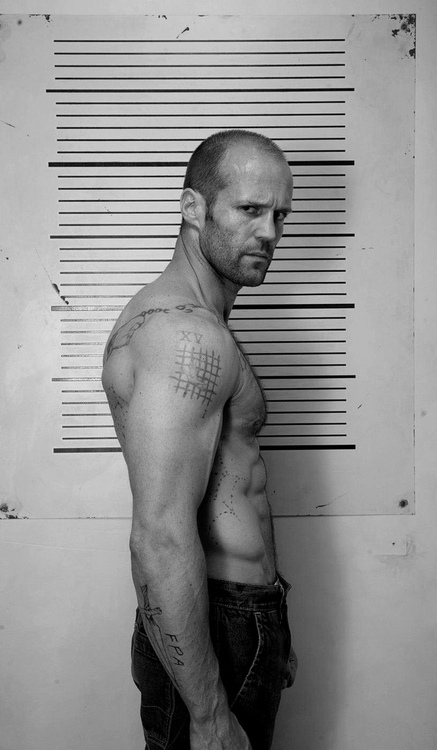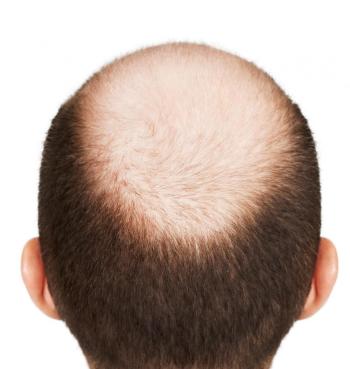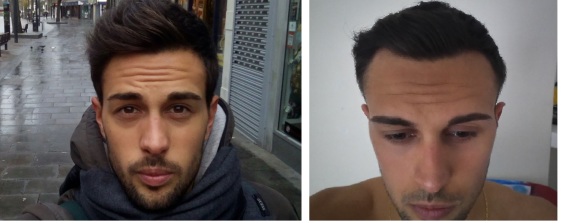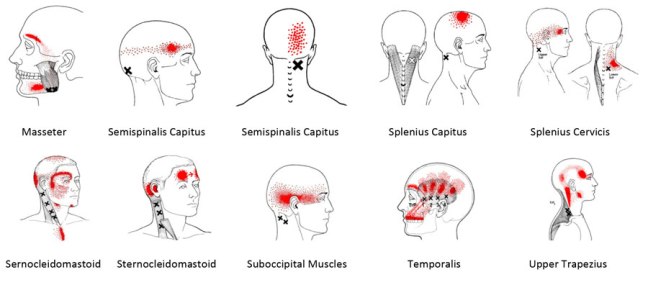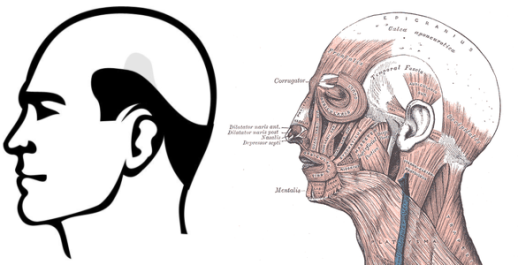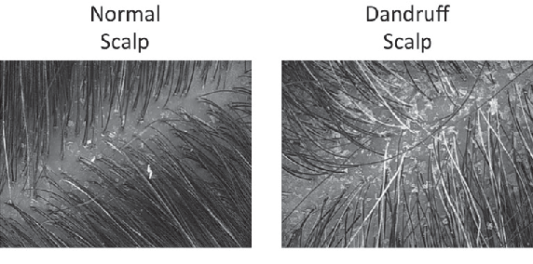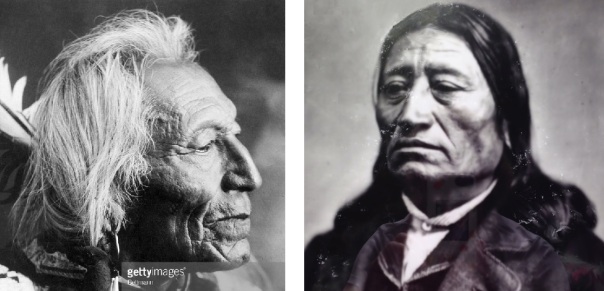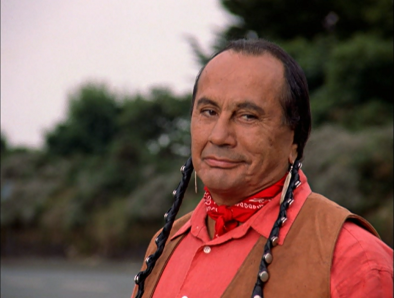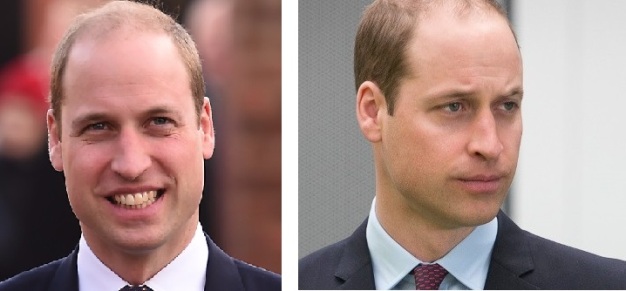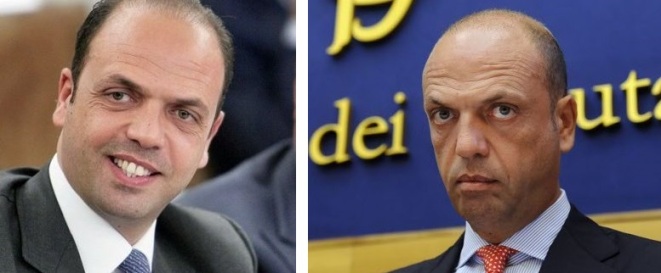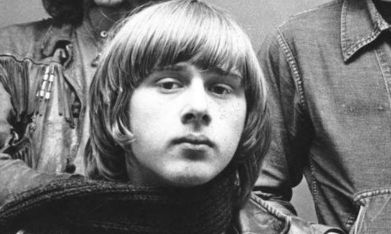Deleted member 1973
pastebin.com/Tb8AYcyk
- Joined
- Jun 8, 2019
- Posts
- 5,826
- Reputation
- 6,870

Hair Loss: The Real Underlying Causes Are Not Androgenetic
Although there are many unknowns, the current medical world has accepted androgenetic factors as the main underlying cause of hair loss. However, all the available treatments fail to have encouragi…
Although there are many unknowns, the current medical world has accepted androgenetic factors as the main underlying cause of hair loss. However, all the available treatments fail to have encouraging success rates, leading to a delay for baldness rather than a complete stop. The underlying causes of baldness has to be searched somewhere else. Let us see where.
Androgenetic alopecia is a common form of hair loss in both men and women. In men, this condition is also known as male-pattern baldness and hair on side of the head are not interested, leading to the typical male-pattern hair loss depicted in the Norwood Scale of Figure 1 [1].
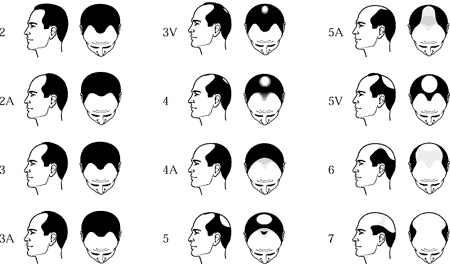
The androgen hormone dihydrotestosterone (DHT) is synthesized from the testosterone by the enzyme 5α-reductase into the hair follicle and it is believed to be the responsible for hair loss. The DHT reacts with the androgen receptor, interfering with the DNA of the cells, inhibiting the follicle from growing healthy hair. Nevertheless, DHT stimulates the production of pigmented terminal hair in many areas after puberty, including pubic and axillary hair in both sexes and beard growth in men. Both beard growth and balding can occur on the same person demonstrating a paradox. How does the same hormone stimulate hair growth on the face while taking it away on the scalp?
The given explanation is that androgen action within individual follicles is specific to the individual follicle i.e. relates to its gene expression. This is also the explanation given to the male baldness pattern: hair follicles in the temple areas and crown are genetically programmed to have receptors that are more sensitive to the DHT action, while hair on side are genetically programmed to be immune to the DHT. Hair transplantation is based on this fact: hair follicles on side and back are considered genetically programmed to be immune to the DHT action, so transplanting them into another region should be a valid solution. But why, once transplanted, these hair start to fall again after some time, leaving patients as in Figure 2?
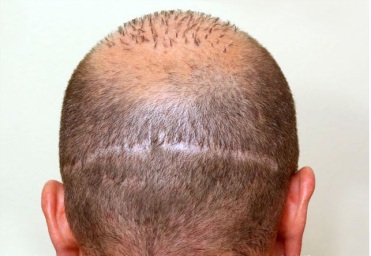
- The last layer of the skin, called stratum corneum, consists of dead cells (corneocytes). Corneocytes are regularly replaced through desquamation and renewal from lower epidermal layers, protecting from pathogenic bacteria, fungi, parasites, viruses, heat, UV radiation and water loss. Replacement of the cells in the outermost layer of the scalp happens regularly, on a monthly base. However, certain conditions trigger a more rapid turnover, leading to a large shedding recognised as dandruff. Excessive dandruff is linked to hair loss [5]. Why?
- Minoxidil is an antihypertensive vasodilator medication, meaning that the main action is the widening of blood vessels, and it has been found to be effective in treating baldness [6]. Also, low level laser therapy has some effectiveness on hair loss [7]. These treatments have no correlation with androgenetic factors, so why are they effective?
- It has been found that in non-bald scalp regions, 1) each region has a uniform skin
thickness and it is thin; 2) the skin is soft; 3) the human head is in flat shape. As for bald scalp regions, 1) each scalp region has a non-uniform skin thickness and it is thick; 2) the skin is hard; 3) the human head is in dome shape [8]. How can be this explained?
So, are androgenetic factors the real main underlying cause of baldness?
To answer this, let us have a look to the scalp layers composition in Figure 3. Just below the scalp skin (epidermis) there is the subcutaneous tissue, where hair follicles, sweat glands, and rich vascular networks lie. Scalp vessels travel within the subcutaneous layer just superficial to the aponeurotic layer called galea. The layer below is the loose areolar connective tissue (subgaleal space) that is so named because its fibers are far enough apart to leave ample open space for interstitial fluid and abundant blood vessels in between. Then there is the periosteum, that in the skull is called pericranium. This is a membrane that covers the outer surface of the bones and it provides nourishment by providing the blood supply to the body. Blood vessels pass through all the scalp layers arriving to the hair follicles.
 Figure 3 – Layers of the scalp. The epidermis, dermis, and galea glide over the pericranium as a fixed unit. Scalp vessels travel within the subcutaneous layer superficial to the galeal layer. (From [30])The galea aponeurotica is attached to the occipitofrontalis muscles, as shown in Figure 4. The temporalis muscles are also connected to the galea aponeurotica via the temporalis fascia. The galea aponeurotica can be stretched by the forces of muscular contraction.
Figure 3 – Layers of the scalp. The epidermis, dermis, and galea glide over the pericranium as a fixed unit. Scalp vessels travel within the subcutaneous layer superficial to the galeal layer. (From [30])The galea aponeurotica is attached to the occipitofrontalis muscles, as shown in Figure 4. The temporalis muscles are also connected to the galea aponeurotica via the temporalis fascia. The galea aponeurotica can be stretched by the forces of muscular contraction.
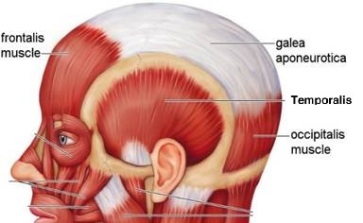 Figure 4 – The galea aponeurotica is attached to the occipitofrontalis muscles and to the temporalis muscle via the temporalis fascia. (From [31])With the rise of civilizations, we are assisting to a down-siding of the entire craniofacial structure, with the maxilla that drops down and back. This reduces the eye support, flattens the cheekbones, narrows the nasal airway, lengthens the mid facial third, and lowers the palate, which narrows and create malocclusion [9]. As shown in Figure 5, a vertical growth of the maxilla forces the mandible to swing back. As compensatory mechanism, a retruded mandible causes the head to tilt forward in a forward head posture [10,11]. Also, vertical growth of the maxilla promotes asymmetrical craniofacial development, referred as cranial distorsions (e.g. sidebending) [12].
Figure 4 – The galea aponeurotica is attached to the occipitofrontalis muscles and to the temporalis muscle via the temporalis fascia. (From [31])With the rise of civilizations, we are assisting to a down-siding of the entire craniofacial structure, with the maxilla that drops down and back. This reduces the eye support, flattens the cheekbones, narrows the nasal airway, lengthens the mid facial third, and lowers the palate, which narrows and create malocclusion [9]. As shown in Figure 5, a vertical growth of the maxilla forces the mandible to swing back. As compensatory mechanism, a retruded mandible causes the head to tilt forward in a forward head posture [10,11]. Also, vertical growth of the maxilla promotes asymmetrical craniofacial development, referred as cranial distorsions (e.g. sidebending) [12].
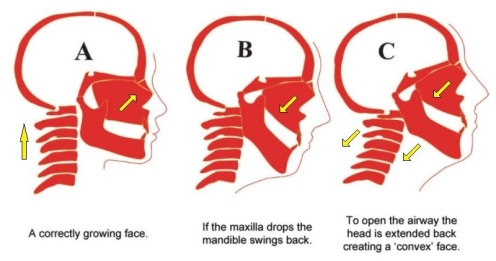 Figure 5 – If the maxilla grows vertically, the mandible swings back. As a compensatory mechanism, the head is extended in a forward head posture. (From [32])Abnormal posture, like in the case of forward head posture and cranial distortions, affects muscle length/tension relationships [13]. This usually leads to pain and overuse injury where small focal, degenerative changes in the insertion fibers can occur [14].
Figure 5 – If the maxilla grows vertically, the mandible swings back. As a compensatory mechanism, the head is extended in a forward head posture. (From [32])Abnormal posture, like in the case of forward head posture and cranial distortions, affects muscle length/tension relationships [13]. This usually leads to pain and overuse injury where small focal, degenerative changes in the insertion fibers can occur [14].
The concept of trigger points provides a framework that can be used to help address certain musculoskeletal pain. In particular, they are useful for identifying pain patterns that radiate from these points of local tenderness to broader areas, sometimes distant from the trigger point itself. As Figure 6 suggests, neck muscles’ action propagates through the entire head.
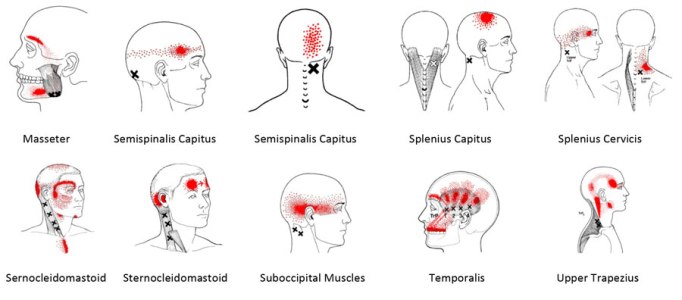 Figure 6 – Referred pains from upper trapezius, sternocleidomastoid, suboccipital, splenius capitis, splenius cervicis, semispinalis capitis,temporalis and masseter muscle trigger points. (From [15])Indeed, whatever else they may be doing individually, muscles also influence functionally integrated body-wide continuities in the fascial webbing [16]. Since muscles throughout the body are connected via myofascial meridians, their action cannot be seen in isolation. This explains why intensity of neck pain, forward head posture, chronic tension-type headache and migraine are strictly correlated [17,18,19,20].
Figure 6 – Referred pains from upper trapezius, sternocleidomastoid, suboccipital, splenius capitis, splenius cervicis, semispinalis capitis,temporalis and masseter muscle trigger points. (From [15])Indeed, whatever else they may be doing individually, muscles also influence functionally integrated body-wide continuities in the fascial webbing [16]. Since muscles throughout the body are connected via myofascial meridians, their action cannot be seen in isolation. This explains why intensity of neck pain, forward head posture, chronic tension-type headache and migraine are strictly correlated [17,18,19,20].
When neck muscles are in continuous tension, their action propagates to the head, stretching and tightening the galea against the underlying layers of the scalp. The underlying structure is rich of blood vessels that are compressed, blocking blood flow towards the hair follicles. The restriction in blood supply to tissues is called ischemia: this leads to insufficiency of oxygen (hypoxia), reduced availability of nutrients and inadequate removal of metabolites. This obviously leads to the death of tissues, thus including the hair follicles (hair loss) and surrounding structures. This is also reflected in the presence of dandruff (excessive shedding of dead cells from the scalp).
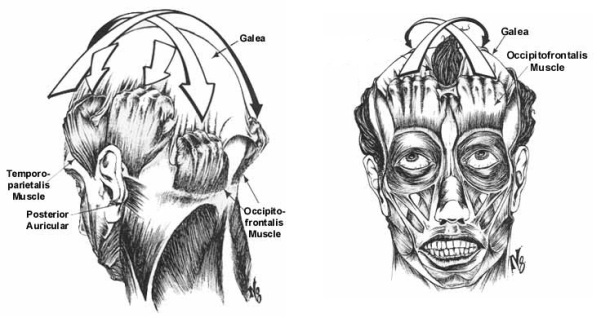 Figure 7 – Drawing explaining muscles action on the galea aponeurotica. When the galea is stretched and tightened, blood vessels are compressed impeding blood flow to reach the hair follicle. (From [33])When tissues are damaged, an inflammatory response is activated. The function of inflammation is to clear out necrotic cells and damaged tissues. The classical signs of inflammation are heat, pain and redness. These elements describe symptoms of scalp sensitivity and trichodynia.
Figure 7 – Drawing explaining muscles action on the galea aponeurotica. When the galea is stretched and tightened, blood vessels are compressed impeding blood flow to reach the hair follicle. (From [33])When tissues are damaged, an inflammatory response is activated. The function of inflammation is to clear out necrotic cells and damaged tissues. The classical signs of inflammation are heat, pain and redness. These elements describe symptoms of scalp sensitivity and trichodynia.
Since the muscle tension that tight the galea is always present, the inflammation is long-term and chronic, causing fibrosis and calcification. This further decreases the blood flow into the scalp, promoting ulterior cells death, leading to a closed-loop chain of events depicted in Figure 8, reason why hair loss progresses with individuals becoming older.
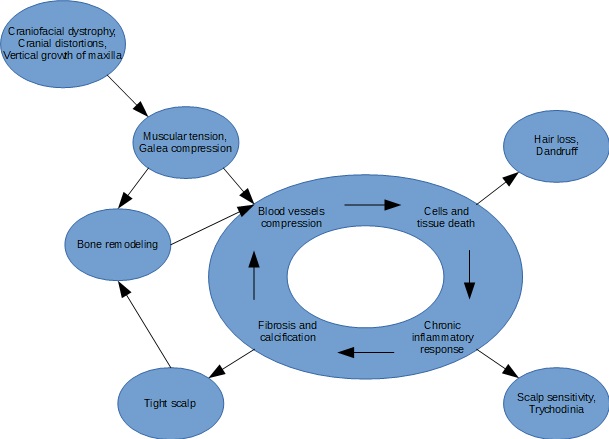 Figure 8 – Closed-loop chain of events leading to hair loss and related symptoms.
Figure 8 – Closed-loop chain of events leading to hair loss and related symptoms.
Furthermore, the role of bones must be taken into account. Indeed, bones remodel under the presence of forces, with sutures acting growth site. The neurocranium may also expand under the compression forces generated by the above layers as a form of protection for the brain. This creates further restriction for the blood vessels, feeding the closed-loop chain of events described before.
The typical pattern of male baldness is characterized by bald frontal and vertex regions that overlie the galea, while temporal and occipital regions that overlie muscles do not lose hair, as shown in Figure 9. Muscles provide a richer network of musculocutaneous blood vessels, with larger arteries, and a softer environment than the galea, thus a compression in these regions do not cause a missing blood flow with consequent hypoxia.
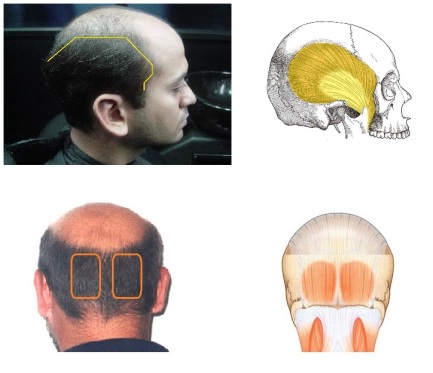 Figure 9 – The typical pattern of male baldness is characterized by bald frontal and vertex regions that overlie the galea, while temporal and occipital regions that overlie muscles do not lose hair.
Figure 9 – The typical pattern of male baldness is characterized by bald frontal and vertex regions that overlie the galea, while temporal and occipital regions that overlie muscles do not lose hair.
The confirmation of this explanation for hair loss can be found in several studies:
To answer this, let us have a look to the scalp layers composition in Figure 3. Just below the scalp skin (epidermis) there is the subcutaneous tissue, where hair follicles, sweat glands, and rich vascular networks lie. Scalp vessels travel within the subcutaneous layer just superficial to the aponeurotic layer called galea. The layer below is the loose areolar connective tissue (subgaleal space) that is so named because its fibers are far enough apart to leave ample open space for interstitial fluid and abundant blood vessels in between. Then there is the periosteum, that in the skull is called pericranium. This is a membrane that covers the outer surface of the bones and it provides nourishment by providing the blood supply to the body. Blood vessels pass through all the scalp layers arriving to the hair follicles.



The concept of trigger points provides a framework that can be used to help address certain musculoskeletal pain. In particular, they are useful for identifying pain patterns that radiate from these points of local tenderness to broader areas, sometimes distant from the trigger point itself. As Figure 6 suggests, neck muscles’ action propagates through the entire head.

When neck muscles are in continuous tension, their action propagates to the head, stretching and tightening the galea against the underlying layers of the scalp. The underlying structure is rich of blood vessels that are compressed, blocking blood flow towards the hair follicles. The restriction in blood supply to tissues is called ischemia: this leads to insufficiency of oxygen (hypoxia), reduced availability of nutrients and inadequate removal of metabolites. This obviously leads to the death of tissues, thus including the hair follicles (hair loss) and surrounding structures. This is also reflected in the presence of dandruff (excessive shedding of dead cells from the scalp).

Since the muscle tension that tight the galea is always present, the inflammation is long-term and chronic, causing fibrosis and calcification. This further decreases the blood flow into the scalp, promoting ulterior cells death, leading to a closed-loop chain of events depicted in Figure 8, reason why hair loss progresses with individuals becoming older.

Furthermore, the role of bones must be taken into account. Indeed, bones remodel under the presence of forces, with sutures acting growth site. The neurocranium may also expand under the compression forces generated by the above layers as a form of protection for the brain. This creates further restriction for the blood vessels, feeding the closed-loop chain of events described before.
The typical pattern of male baldness is characterized by bald frontal and vertex regions that overlie the galea, while temporal and occipital regions that overlie muscles do not lose hair, as shown in Figure 9. Muscles provide a richer network of musculocutaneous blood vessels, with larger arteries, and a softer environment than the galea, thus a compression in these regions do not cause a missing blood flow with consequent hypoxia.

The confirmation of this explanation for hair loss can be found in several studies:
- Bald subjects had a positive response when injected with Botox into the muscles surrounding the scalp, including frontalis, temporalis, periauricular, and occipitalis muscles. Conceptually, Botox “loosens” the scalp, reducing pressure on the perforating vasculature, thereby increasing blood flow and oxygen concentration. This leads to reduced hair loss and new hair growth [21].
- The subcutaneous blood flow in the scalp of patients with early male pattern baldness is much lower than the values found in the normal individuals [22].
- Men suffering from androgenic alopecia have significantly lower oxygen partial pressure (meaning microvascular insufficiency and hypoxia) in the areas of their scalp affected by balding (frontal and vertex regions) versus unaffected areas (temporal and occipital regions). Moreover, balding men have significantly lower oxygen partial pressure in the areas of balding scalp than the same areas of non-bald people [23].
- It has been found that Minoxidil solution stimulates the microcirculation of the bald scalp, effectively promoting hair growth [24].
- By relieving tension at the vertex in the scalp, cutaneous blood flow rate increases, promoting hair regrowth [25].
- Minoxidil is less effective in subjects with significant inflammation in the scalp than in subjects with no significant inflammation [26].
- In women, significant degrees of inflammation and fibrosis is present in cases of androgenetic alopecia. Even if less significant, inflammation and fibrosis is present also in chronic telogen effluvium cases[27].
- Dr. Frederick Hoelzel of Chicago reported the observations he made in 1916-17 while he served as a technician in gross anatomy at the College of Medicine of the University of Illinois. During that time, he removed the brains of around 80 cadavers and noticed an obvious relation between the blood vessel supply to the scalp and the quantity of hair: “baldness occurred in people where calcification of the skull bones apparently not only firmly knitted the cranial sutures but also closed or narrowed various small foramens through which blood vessels pass“. He thought this would also explain why men suffer baldness more than women, since bone growth or calcification is generally greater in males than females [28].
Craniofacial development plays an important role in hair loss: indeed it is the real underlying cause that gives predisposition to baldness. Predisposition means that it is possible to see people with a poor craniofacial development and no signs of hair loss, but it is not possible to see bald people with a good craniofacial development. If spotting a bald person, you will be 100% sure that he has jaw problems to some extent. Look around and try yourself! So, do you still believe in the androgenetic theory?


